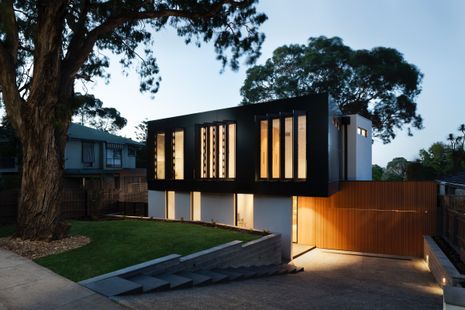|
|
|
|
|
The Worst Of It Is Over For Builders
A lack of skilled workers continues to put pressure on Australia’s housing shortage crisis, according to the Master Builders Association, although Australia’s big builders believe they have come through the worst of it.
Master Builders Association CEO, Denita Wawn, says Australia’s economy is still navigating a challenging period.
New home building activity is declining with work starting on only 173,755 new homes during FY2023, a 16.5% drop on the previous year.
“In 2023-24 we will see home starts decline by another 2.1% to around 170,100, well below the 200,000 needed per year to meet population growth,” Wawn says.
Meanwhile the head of Australia’s largest home construction company believes most of the industry’s biggest builders are now through the worst of the crisis.
Metricon chief executive, Brad Duggan says the industry is now on a more even keel.
“We see build times getting faster and working through the challenges in the market every day we see ourselves getting back to more normalised programs.” |
|
|
|
|
|
|
|
Mortgage Market Calming
The home mortgage market is calming down as experts predict rate rises are coming to an end.
Many believe the cash rate has now peaked, with major banks reducing some of their fixed rates.
Chief executive of mortgage broker Finspo, Angus Gilfillan, says fixed interest rates have crossed a “pivotal threshold” dropping below new variable rates for the first time since January 2022.
“The current situation suggests an inflection point, where the market no longer expects interest rate rises to occur in the medium term,” he says.
The average new variable rate has increased 2.5 percentage points to 5.95% in the past year, while the average new fixed rates increased by 1.7 percentage points to 5.8%.
RateCity research director, Sally Tindall, says banks have been trying to rein in some of the more aggressive discounts they were offering previously.
She says it’s unlikely that variable rates among the big four will drop 6% until the Reserve Bank cuts the cash rate. |
|
|
|
|
|
|
|
Key To Unlock Affordable Housing
A proposed Affordable Housing Register is being touted as a possible solution to unlocking “hundreds of millions” of dollars of private investment into affordable housing.
Platform founder, Rob Pradolin, says it will provide a verifiable way for individuals to own and lease units for qualifying key workers at below-market rents, widening the pool of money in affordable housing beyond institutions and community housing providers.
He says it unlocks private sector capital by letting developers sell to their investor database an affordable home which will be monitored for 30 years by the register.
Industry will be able to see where affordable housing is located, which Pradolin says is information currently held on disparate spreadsheets held by individual local authorities.
PEXA CEO Glenn King says the lack of affordable housing is a societal problem that requires collaboration between business and the public sector.
Pradolin says by unlocking private sector capital, we can offer affordable housing for essential workers that is closer to their workplaces, strengthening our local communities. |
|
|
|
|
|
|
|
More Jobs A Boost To Economy
The Australian jobs market is on the up, with August labour force figures showing that 410,000 jobs were created in the past year.
Of those 65,000 were created in the past month.
Australian Bureau of Statistics figures show the jobless rate is 3.7%. At the same time that jobs are growing, Australia’s population continues to grow.
In the 12 months ending in March of this year, Australia recorded a net population growth of 563,200, bringing the total population to 26.5 million people.
The surge increased the annual growth rate to 2.2%.
Increasing migration leads to increasing demand for labor but will also put further pressure on the housing market, which is already at crisis level.
The ABS attributes the growth to net overseas migration, which accounted for 81% of total population growth.
The population growth is expected to drive further economic growth.
Victoria, Western Australia, and Queensland experienced substantial population increases in the 12 months to March. |
|
|
|
|
|
|
|
Auctions Remain Strong
Auction clearance rates remain strong as more properties are being offered under the hammer, according to new data.
New listings on realestate.com.au are up 20.5% month-on-month in August, according to the latest PropTrack Listings Report, although only 4.1% higher than the same time last year.
PropTrack senior economist, Angus Moore says activity is likely to increase over the spring selling season.
“Selling conditions and home prices have also improved compared to late 2022,” Moore says.
“Home prices nationally have continued to recover, posting their eighth consecutive month of growth in August.”
He says after a quieter first half of 2023, property market activity appears to be picking up in Sydney and Melbourne.
New listings are up 18.4% in Sydney and 20.8% in Melbourne compared to the same time last year, while Canberra is up by 23.2%.
Brisbane listings are down 10.4%, Perth is down 8.6%, Darwin is down 5.4%, Adelaide is down 3.3% and Hobart is down 1.8%. |
|
|
|
|
|
|
|
|
Quote Of The Week
“Selling conditions and home prices have also improved compared to late 2022. Home prices nationally have continued to recover, posting their eighth consecutive month of growth in August.”
PropTrack senior economist, Angus Moore
|
|
|
|
|
|
|
|
|
|










